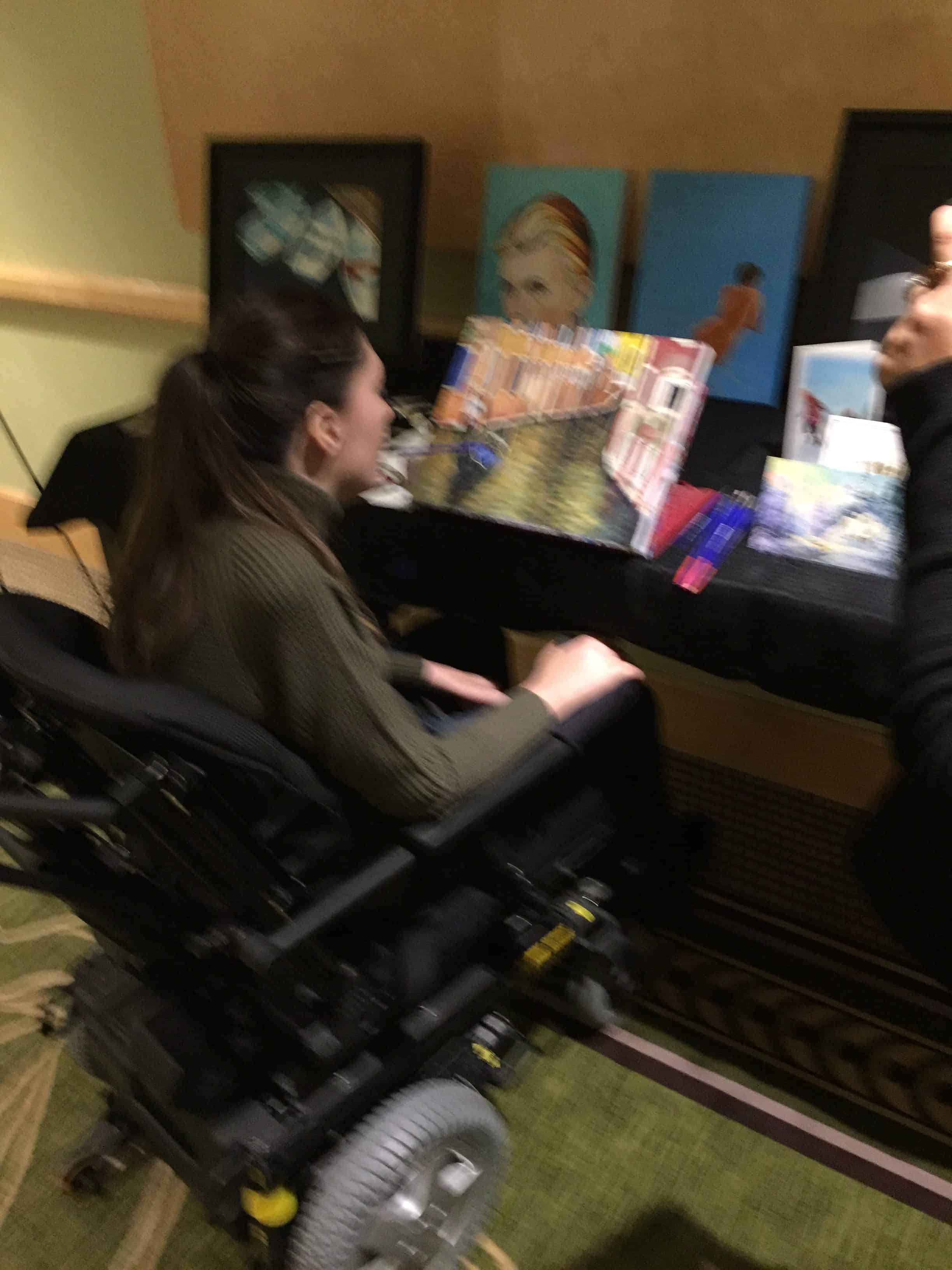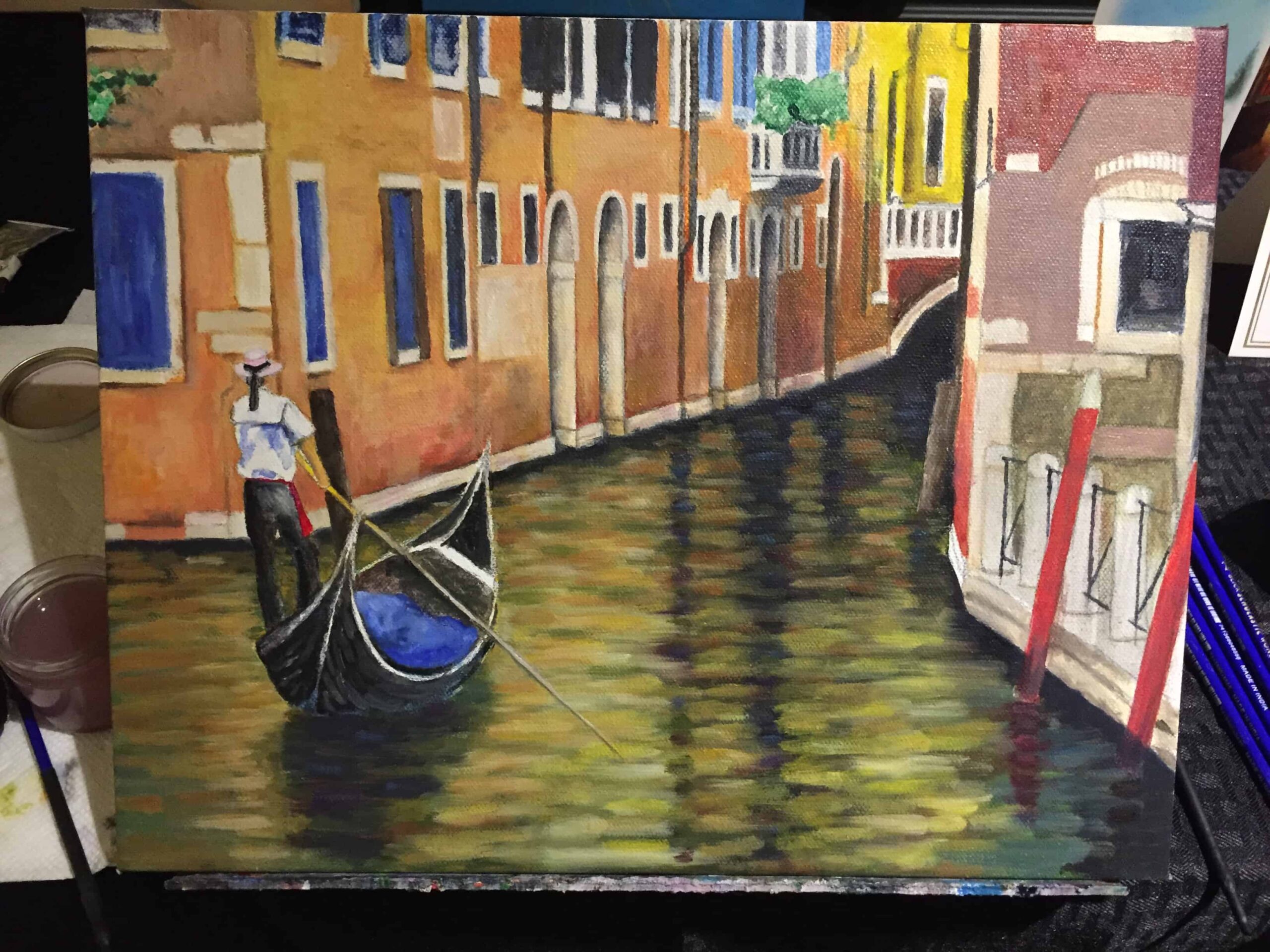
Some people are able to find a way to continue with their life’s work even after suffering a disabling accident. Mariam Pare is one of those people.
Pare gave a demonstration of her art and technique last week at the Hilton Hotel in Manhattan.
Pare is an inspirational woman who makes renowned artwork while painting using her mouth as a result of an unfortunate accident that happened when she was 20 years old. While visiting Virginia, she was shot by an unknown person while driving her friend’s car. The gun violence gave her a C5/C7 spinal cord injury and left her a quadriplegic.
Her accident was in 1996 when she was in college.
“Nobody ever thinks that is going to happen to them. Nobody ever thinks they are going to get shot,” said Pare. “Nobody ever thinks they are going to be a quadriplegic mouth painter. It is funny what life gives you when you least expect it.”
Pare started when she was a little girl, describing herself as artsy from the beginning. She studied art in college, and was still enrolled at the time of the accident. She was determined to keep painting even after losing the use of her hands.
“I was taught to write my name with my mouth because I could not longer use my hands, so I took that technique and applied it to painting,” said Pare. “I said ‘if I could write my name with my mouth why can’t I paint?’”
Pare, who lives in the suburbs of Chicago, was thrilled to have art back in her life after fearing she would never be able to paint again. Her talent has continued to evolve and grow in the 20 years since the accident.
“When I first started mouth painting I was really bad at it,” she said. “With my mouth it was like starting over. I was doing stick figures, my name, very simple things.”
At the Hilton, Pare demonstrated her technique to the audience. She was in the middle of a painting of the canals in Venice. It was very impressive to notice the extreme precision she could achieve using a brush controlled only by her mouth.
She is part of an organization called Mouth and Foot Painting Artists (MFPA), which has 74 members in the United States. She received a grant through MFPA to finish her education, and she was introduced to a whole network of artists who shared her disability.
“Their support and their scholarship helped me dedicate my life to art,” said Pare.
She has been a member MFPA for the last 10 years. They have helped her with her professional career. She does licensing cards, calendars, illustrated books, puzzles and is well known for her portraits.
The painting she was most excited during the interview was one of Pierce Brosnan, which she delivered personally to his Malibu home in 2014.
“He knew of MFPA and heard that I painted his portrait,” Pare added. “I just painted his portrait because I think he is a cool guy. He is a painter, too. Instead of having me ship it to him he allowed me to come and bring it to him. I hung out with him and he showed me his artwork and we talked about art.”
Brosnan himself had painted a portrait of his late wife and daughter, who both died from ovarian cancer, and Pare got to see that portrait while in his house.
Pare started out doing self portraits because she thought that was the best way to relearn her craft. A recent theme of her paintings has been of notable celebrities whose lives have been ended due to gun violence.
“You know, my life was affected by gun violence,” Pare said. “I did Gandhi, I did JFK and I did John Lennon.” She has also done a portrait of Kathy Lee Gifford.
“I like the challenge in portraits like trying to capture someone’s personality,” Pare added. “You have to capture the essence of the person and I love the challenge of trying to do portraits.”
 She has the most amount of fulfillment and passion when using colors in her work. “If I know I am doing a certain subject and if it is colorful it makes me happy, it makes me energized,” Pare said.
She has the most amount of fulfillment and passion when using colors in her work. “If I know I am doing a certain subject and if it is colorful it makes me happy, it makes me energized,” Pare said.
She likes working with kids and other people who might have a disability like she does.
“One of my favorite things is working with kids, or disabled kids, and also doing workshops,” Pare added. “They don’t have to just be a mouth painter, but I do lessons or workshops for people to get them encouraged to make art despite any challenges they might be faced with.”
“I don’t seek out to inspire people,” Pare continued. “I hope I am a good example for the disabled community. That I am a disabled person who is seeking employment and is employable and is ambitious and I work hard. I would rather be a positive example of what a person with a disability can do.”









